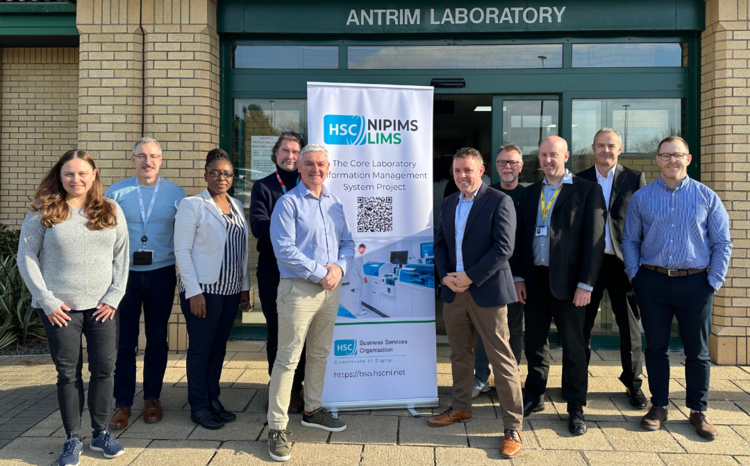Black Country trusts looking to create multi-million pound pathology service
- 10 August 2017

Four NHS trusts in the Black Country are looking to create a multi-million pound single pathology service, with a common laboratory information system (LIMS) which is deemed critical to the success of the project.
The Outline Business Case for the project, revealed in Walsall Healthcare NHS Trust August board papers, proposes a ‘hub and spoke’ option with a linked IT system.
A shake-up of pathology services was called from Lord Carter, in his 2008 review. It recommended that IT connectivity should be prioritised alongside the creation of the hub and spoke model.
The shared LIMS would run across Walsall, The Dudley Group NHS Foundation Trust, The Royal Wolverhampton NHS Trust and Sandwell and West Birmingham Hospitals NHS Trust.
The report says the overall pathology spend would be about £708 million over the next decade, with estimated savings of more than £65 million.
The shared IT is critical to the success of the service, says the report, “a modern, secure, single LIMS is deemed vital for the collaboration”.
Motivation behind the project includes high profile LIMS failures, including the pathology blow-out at Leeds Teaching Hospital NHS Trust. The crash saw 143 non-urgent procedures postponed, regional blood services disrupted and parts of electronic microbiology systems knocked out for more than two months in September 2016.
The May WannaCry cyber-attacks also demonstrated the need for stable LIMs. The report said the malware attack “left a number of pathology services crippled, and reliant on paper for the operations of their laboratories”.
Out of seven options proposed in the report, the preferred was of the hub and spoke model. The central site would be at Wolverhampton’s New Cross Hospital and the other trusts having their own emergency service laboratory each processing urgent blood sciences and all blood transfusion work.
The other sites would be connected by the LIMs which would provide staff and patient benefits, according to the report.
“A single LIMS ensures that all sites are able to share data with regards to samples effectively, and will enable digital pathology, including digital histopathology, which will reduce the travel burden on staffing.”
Examples of pathology deployments to emulate are Pathology First, South West Pathology, Southwest London Pathology, Frimley Park and HSL, said the paper.
In a group statement to Digital Health News from all four trusts, they said that the boards “have now agreed to review more detailed information and seek assurances over the next two months to understand how the proposed model would meet agreed clinical standards so that patients and clinicians receive consistently high quality diagnostic services”.
“Colleagues at each organisation are being engaged in the proposals and the next stage is the development of a full business case for each trust board to review which we would expect to be complete before the end of 2017.”
In the Black Country, the proposed procurement timeline for the IT infrastructure is October 2017 to March 2018.
The full business case will be presented to the October board, and it is expected that the hub extension should be completed by December 2018, the board papers said.





11 Comments
The advantage of a single LIMS is that it allows staff to work anywhere within the network to common SOP’s, increasing flexibility and resilience of the service.
Charles, so the hub and spoke works with improved efficiency and has recurring cost savings?
Yes Dave – staff are the most costly part of any operation and always the way to a quick fix. Sadly the ones to go will doubtless be the good ones whilst the dead wood will remain and prosper. You can merge, downsize and dispose of staff but the wheel inevitably turns and down the line there’ll be a call for smaller, local labs and a ‘desperate’ shortage of BMS staff. We’ve seen it before with Midwives and District Nurses. The scheme will supposedly ‘save’ £65 million – a mere drop in the ocean when it comes to IT projects.
As the IT Director for iPP (the Essex joint venture, Pathology First) we have implemented WinPath Enterprise across three sites operating a hub and spoke model. I would caution changing the IT, the ways of working and commissioning a new laboratory at the same time. However having once done it there is then a template for further additions. However it is not plain sailing as the suppliers a) are still using old technology (windows Server 2008 and XP in their solutions and particularly in the middleware between analysers and the LIMS and b) there are still issues of multiple hospital numbers and c) ideally all parties both primary and secondary care should be using order comes BEFORE you start.
Things haven’t changed much except when implementation is approached in a controlled, well prepared and well thought through manner. Pathology is one of the most complex areas when it comes to IT due to the wide variety of workflows, automation and external interfacing. You always get a few sceptics but BMS staff in the main are quite receptive to change and will engage well if you involve them in the decision making and planning. What concerns me are these sweeping statements about potentially wiping the slate clean and starting again with a new shiny system for all involved. This is why I asked about what others have already done – did you go all new or simply refresh one of the incumbent systems and expand it
@Katie – it sounds like a pretty bad situation and I don’t really want to make this a political thread but mergers (or collaborations as they are now known it seems) are always about saving cash. Sure you can save a bit on utilities, space, streamlining workflows and consumables discounted for volume but the only real way to do it is reduce the staff – usually by natural wastage. Anyone who thinks/says otherwise is deluding themselves
Indeed – Unless something has changed, new IT inevitably goes way over budget, encounters numerous problems with integration and migration and even if it gets up and running performs sub-optimally.
Shocking how the majority of staff at Walsall have not been informed of the “alliance”- it’s a merger at the end of the day. An email was sent out to the whole trust prior to the staff involved. At subsequent meetings, hastily arranged, we were told no jobs would be lost, and then another director said 15% of jobs will be lost and then another director said 20% – that’s nearly a quarter of the work force!
Hi Steve. Whilst a single LIMS isn’t the only solution it probably has a better track record of achieving the most stream-lined and stable end point. NPEx doesn’t really fully support full integration of disparate IT systems. Integration engines, middleware, test translation tables…. all add to complexity, errors, inefficiencies and system instability. Don’t get me wrong, NPex is great at what is does, I just don’t think NPex is geared for the job at hand in the Black Country.
I think
I agree NPEX is an amazing tool but
Not without problems and from experience is not
Sophisticated enough as present to be a multi faceted LIMS.
Single LIMS shouldn’t be considered the *only* option. I appreciate that laboratories need to upgrade archaic systems but connectivity between systems across a consolidated lab network is still feasible. The National Pathology Exchange supports this across multiple lab networks for a range of laboratory medicine disciplines across the country for medium/high volumes already.
If anyone could help me out by responding I’d be grateful. A single LIMS is deemed as being imperative for Pathology collaboration to be a successful venture (although there are examples that still run multiple LIMS). Of the current collaborations out there:
1) how many have moved to a single LIMS?
2) Of those that moved, did any refresh one (or more) of the existing LIMS and expand it to the other sites that didn’t have that flavour.
2) Of those that have a single LIMS, did any move to a totally new LIMS
thanks
Comments are closed.